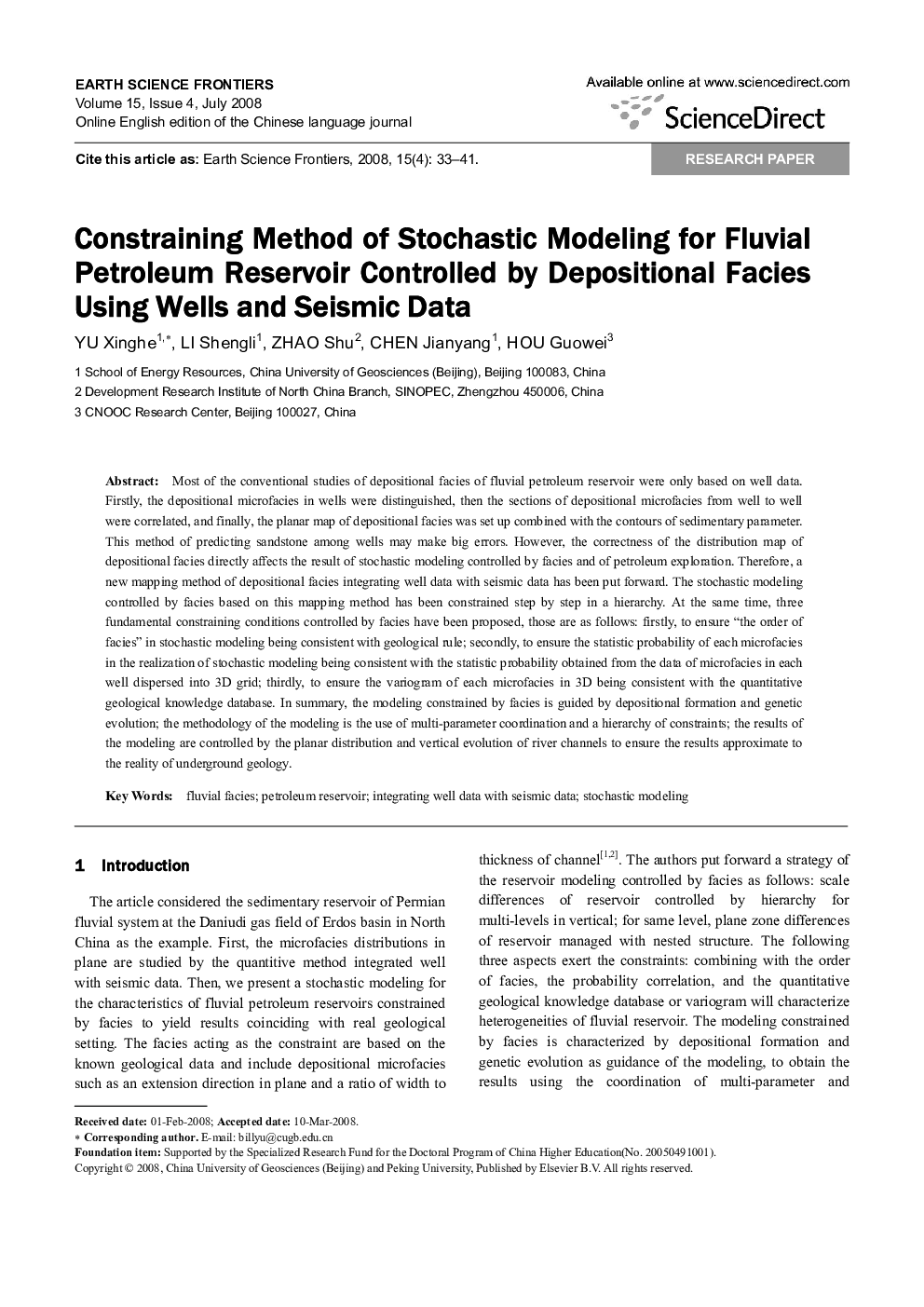| Article ID | Journal | Published Year | Pages | File Type |
|---|---|---|---|---|
| 4701611 | Earth Science Frontiers | 2008 | 9 Pages |
Most of the conventional studies of depositional facies of fluvial petroleum reservoir were only based on well data. Firstly, the depositional microfacies in wells were distinguished, then the sections of depositional microfacies from well to well were correlated, and finally, the planar map of depositional facies was set up combined with the contours of sedimentary parameter. This method of predicting sandstone among wells may make big errors. However, the correctness of the distribution map of depositional facies directly affects the result of stochastic modeling controlled by facies and of petroleum exploration. Therefore, a new mapping method of depositional facies integrating well data with seismic data has been put forward. The stochastic modeling controlled by facies based on this mapping method has been constrained step by step in a hierarchy. At the same time, three fundamental constraining conditions controlled by facies have been proposed, those are as follows: firstly, to ensure “the order of facies” in stochastic modeling being consistent with geological rule; secondly, to ensure the statistic probability of each microfacies in the realization of stochastic modeling being consistent with the statistic probability obtained from the data of microfacies in each well dispersed into 3D grid; thirdly, to ensure the variogram of each microfacies in 3D being consistent with the quantitative geological knowledge database. In summary, the modeling constrained by facies is guided by depositional formation and genetic evolution; the methodology of the modeling is the use of multi-parameter coordination and a hierarchy of constraints; the results of the modeling are controlled by the planar distribution and vertical evolution of river channels to ensure the results approximate to the reality of underground geology.
